Have you ever noticed those fuzzy, bright red cone-shaped berry clusters growing on shrubs in late summer? That’s staghorn sumac! Sumac is a traditional remedy known for its high vitamin C content and tart, lemony flavor. You can steep the berries into a refreshing tea that’s perfect over ice on a hot summer day. In this post, you’ll learn how to identify and harvest staghorn sumac and how to turn it into a delicious homemade iced tea.

What’s Staghorn Sumac?
Staghorn sumac (Rhus typhina) is a shrub native to eastern North America, but it’s also widespread in southeastern Canada, the northeastern and midwestern United States, and throughout the Appalachian Mountains. It’s often grown as an ornamental shrub in many temperate regions. Sumac grows up to 5 m (16 ft) tall by 6 m (20 ft) wide. Its branches have a forking pattern and a fuzzy, velvety texture that can remind you of deer antlers.
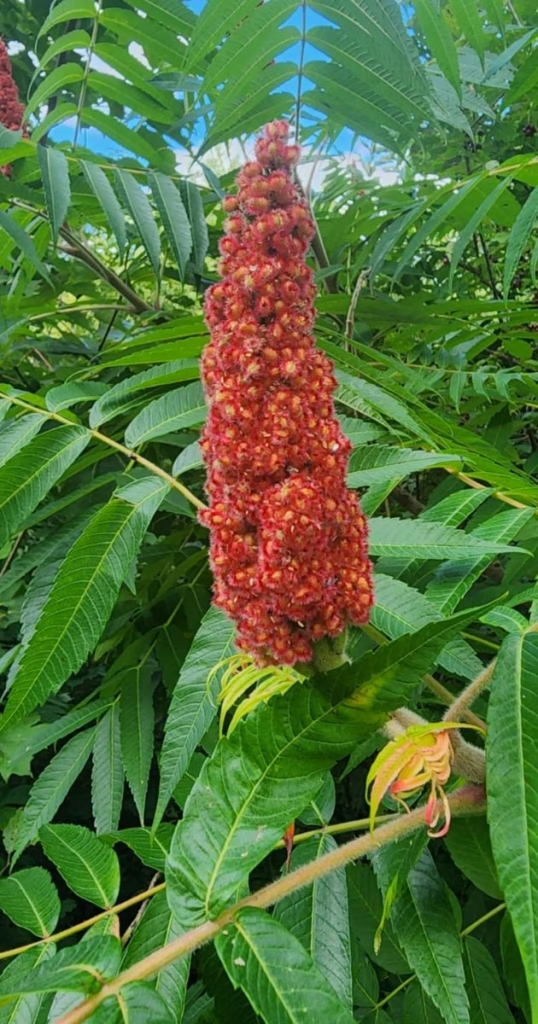
In the summer, female sumac trees produce cone-shaped clusters of edible berries. In fall, the leaves turn beautiful shades of red, orange, and gold before dropping. Both the leaves and berries are rich in tannins and have traditionally been used as a natural dye and mordant for yarn and fabric, producing golden, beige, gray, or green hues.
How to Harvest Sumac Berries for Tea
The first thing to know when picking sumac berries is how to identify the right plant! Staghorn sumac has bright red, fuzzy clusters of berries, which easily distinguish it from poison sumac (Toxicodendron vernix), which has white berries and grows in wet, swampy areas.
Most of the flavor and beneficial compounds in sumac berries are found in the coating on the seeds. Rain can wash this coating away, making the berries less flavorful. For this reason, it’s best to pick sumac during dry weather. Harvest the clusters in late summer (end of July through mid-August), when they are bright red (not pale), fuzzy, and firm. Once fall and the rains come, the berries become paler and lose their plump fluffiness—and their flavor.

To pick sumac berries, simply use sharp scissors or a knife to cut the clusters off the shrub at the base. Try to handle them as little as possible to avoid rubbing off the flavorful coating. After handling, look at your fingers and you’ll likely see a sticky residue. Give it a little lick to experience sumac’s lemony flavor! Avoid rinsing the berries before making tea, or you’ll wash away most of their taste.
Be aware that sumac clusters can occasionally be infested with bugs hiding in the middle. If you notice insects or grayish, shriveled berries inside the cluster, simply discard those.
My Secrets for The Best Sumac Berries Tea
While many people steep sumac berries in hot or boiling water, I find that cold infusion brings out the best flavor. Hot water draws out the tannins in sumac, which can make the tea bitter and astringent. A cold infusion up to 24 hours gives you a clean, citrusy taste and helps preserve the vitamin C content.
I like to add one or two black tea bags to the sumac infusion to deepen the flavor and give it a gentle caffeine boost. I also love tossing in some fresh or frozen berries for color and extra flavor. Strawberries are a classic pairing, giving you a tea that tastes like strawberry lemonade. Try blueberries or raspberries for a fun twist and a beautiful, rich color. Finally, you can garnish your iced sumac tea with fresh mint leaves, or get creative with basil, thyme, or oregano for something a little different.
Why You’ll Love This Sumac Tea
This sumac tea has a lovely tart, citrusy flavor, sweetened just enough with honey. It’s incredibly refreshing, especially on a hot summer day. I find this tea quite similar in flavor to hibiscus or rosehip tea.

It’s also packed with vitamins and antioxidants. Like lemon, sumac is rich in vitamin C, B vitamins, and powerful plant compounds like anthocyanins and flavonoids. These nutrients can help support the immune system and protect against oxidative stress.
Traditionally, sumac has been used to treat diarrhea, sore throats, and infections of the mouth and throat. This tea can be a gentle and supportive remedy if you’re feeling under the weather.
Safety notes
Note that sumac can also lower your blood pressure. Limit or avoid if you have low blood pressure or if taking blood pressure medications.
Sumac belongs to the same family as mango, so avoid it if you’re allergic!
Ingredients for this Refreshing Sumac Tea

Filtered water. Avoid using chlorinated water.
Sumac berries. Use freshly foraged, bright red staghorn sumac clusters. You can also use dried sumac for this tea.
Honey. Natural sweetener that complements sumac’s tanginess. You can also use your choice of sugar or other sweetener.
Lemon juice. Use freshly squeezed lemon juice to boosts the citrus flavor and enhances the vitamin C content.
Black or green tea (optional). Add one or two teabags for more depth of flavor and a light caffeine boost.
Berries (optional). Add more flavor and color to the tea. You can use strawberries, blueberries, or raspberries, both fresh or frozen work.
Mint or basil leaves (optional). Use them for the infusion or as garnish for a refreshing and colorful touch.
Ice. To serve the tea cold and refreshing.
Tools You May Need
Lemon juicer (optional).
Pot or kettle.
Large 1500 ml mason jar or other glass container.
Fine mesh strainer and cheesecloth.
How to Make Sumac Tea
Step 1: Prepare and gather your ingredients. Remove the sumac berries from the main stem and separate the seeds using your hands or scissors. This step is optional, as you can also infuse the clusters whole, but separating the seeds will give you a more flavorful tea. Juice the lemon.
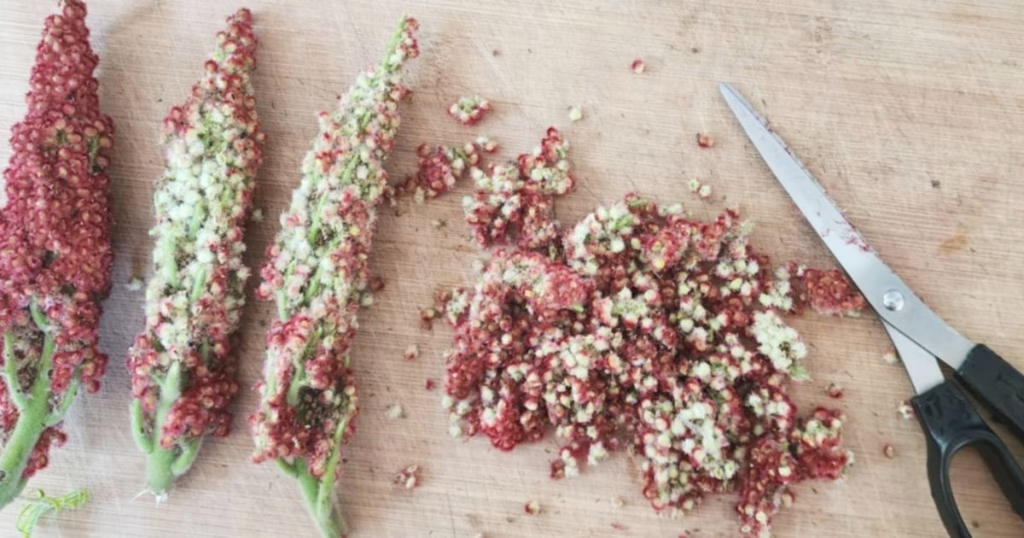
Step 2: Bring about 1 cup of filtered water to a boil, then pour it into your large jar. Add honey and stir until fully dissolved. If using tea bag(s), add them to the hot water and steep for a few minutes, then remove.
Step 3: Add the remaining (cold) water to the jar, followed by the sumac seeds, lemon juice, and berries (if using).

Step 4: Place a lid on the jar and shake vigorously. Let the tea infuse overnight at room temperature or for up to 24 hours in the refrigerator. Shake the jar occasionally to help release the flavors.
Step 5: Once the tea is infused to your liking (you can taste-test it), give the jar a final shake, then strain the tea through a fine sieve lined with a cheesecloth or clean tea towel into another jar.
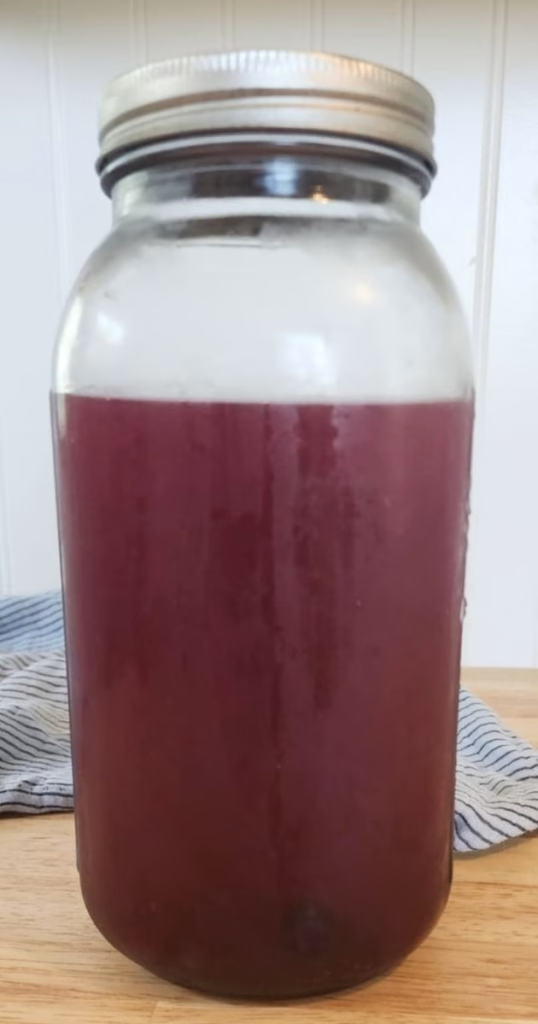
Step 6: Serve over ice and garnish with mint or basil leaves if desired.
Notes
Store this lemonade in the refrigerator for up to a week.
Pin It For Later

More Posts You MAy Like
DIY Lemon and Vinegar Cleaner: Easy, Effective, All-Natural
Tonic and Soothing Drink with Ginger, Honey, and Apple Cider Vinegar
Plantain Salve: Easy Recipe for Cuts, Bug Bites and More
Yarrow Salve: Easy DIY Recipe for Soothing and Healing Skin
Printable Recipe Card
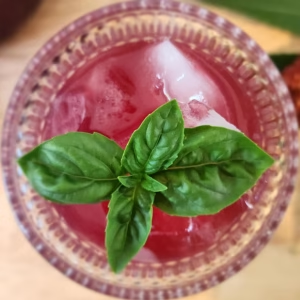
Sumac Berries Tea: A Refreshing Drink Rich in Vitamin C
Equipment
- Lemon juicer (optional).
- Pot or kettle.
- Large 1500 ml mason jar or other glass container.
- Fine mesh strainer.
Ingredients
- 6 cups (1500 ml) filtered water
- 3-4 clusters of sumac
- 2-3 tbsp honey
- ½-1 lemon juiced
- 1-2 teabags optional
- ½ cup berries optional
- Mint or basil leaves optional
Instructions
- Prepare and gather your ingredients. Remove the sumac berries from the main stem and separate the seeds using your hands or scissors. This step is optional, as you can also infuse the clusters whole, but separating the seeds will give you a more flavorful tea. Juice the lemon.
- Bring about 1 cup of filtered water to a boil, then pour it into your large jar. Add honey and stir until fully dissolved. If using tea bag(s), add them to the hot water and steep for a few minutes.
- Add the remaining (cold) water to the jar, followed by the sumac seeds, lemon juice, and berries (if using).
- Place a lid on the jar and shake vigorously. Let the tea infuse overnight at room temperature or for up to 24 hours in the refrigerator. Shake the jar occasionally to help release the flavors.
- Once the tea is infused to your liking (you can taste-test it), give the jar a final shake, then strain the tea through a fine sieve into another jar.
- Serve over ice and garnish with mint or basil leaves if desired.




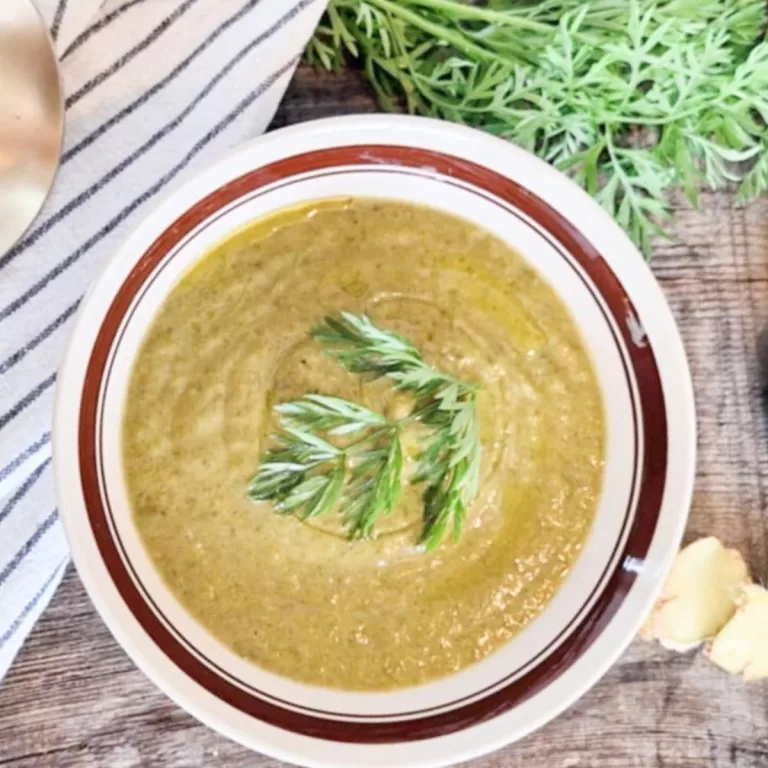
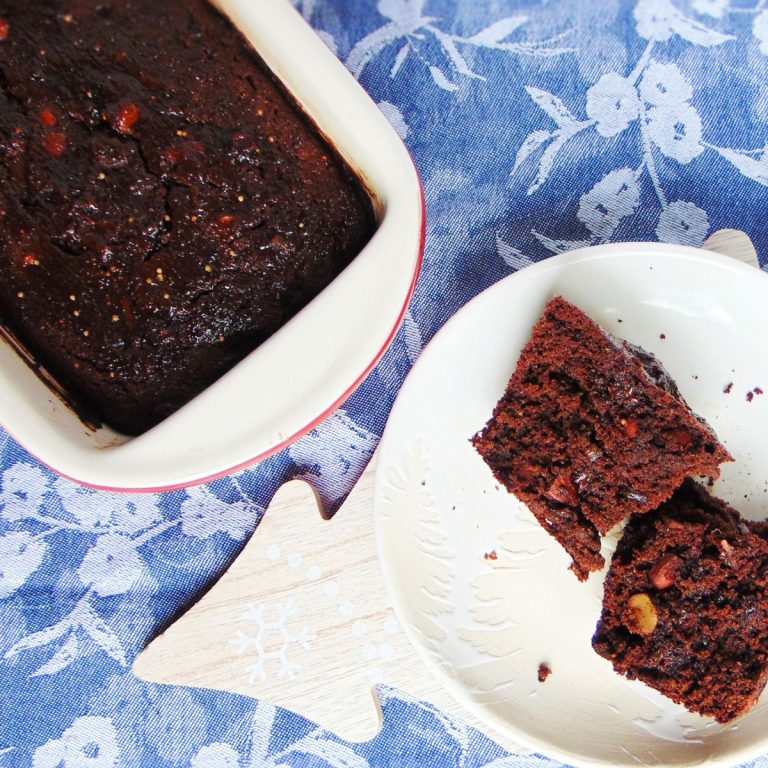

I haven’t found any sumac trees around here yet and I’ve been looking. Most likely I’ll have to plant me one to make sumach lemonade or tea. There were lots of these trees where I lived in WA but not in any public areas and they look so cool too! I learned about making sumac lemonade a few decades ago on a foraging excursion with a local guide back in NH and found that super fascinating, but have yet to actually try it. I’ll save this page here and hope that some day I’ll be able to make this tea.
They do certainly look cool and make great ornamental trees too. We’re lucky to have plenty growing around, just by the side of the road we walk on everyday. I hope you get to try this tea one day 🙂